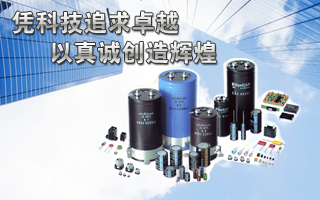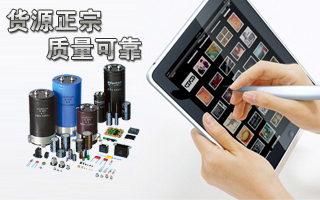-
The Latest Technology Trends in Chip-Type Aluminum Electrolytic Capacitors for automotive market
The automotive (transportation) market is experiencing strong growth with eco-cars at the forefront. Seeing particularly rapid growth are EVs (electric vehicles) and FCVs (fuel-cell vehicles) thanks to their low environmental impact and economy. Even greater growth is predicted as the support infrastructure is built.
Crucial to innovation in the transportation market will be components that have higher performance and more advanced functionality. Eexamples of what will be needed are smaller footprint, higher efficiency, longer service life, and the ability to withstand extreme environments. As the industry offers the consumer more interior comfort the component requirement will be for smaller parts that can operate in extreme conditions. This can also be said for applications outside the transportation industry, this is why high-density mounting is expanding in the industrial and information and communication markets. Against this background, the market for capacitors used in automotive is moving away from through hole capacitors and towards surface mounted.
Let’s look at the latest trends in chip-type aluminum electrolytic capacitors from Nichicon.
Aluminum electrolytic capacitors use aluminum to increase the surface area of the electrodes, as a result they have a higher capacitance per volume than other type of capacitor. In addition, aluminum is less expensive than other metallic materials, making it possible to build capacitors at a lower cost and with higher capacity. Capacitors are versatile electronic components used in many different kinds of everyday electronic equipment.
Aluminum electrolytic capacitors use an aluminum oxide (Al2O3) coating as dialectric material, which is formed onto highly pure aluminum foil surface. This aluminum oxide coating has a high relative permittivity (is this supposed to be permeability)and can be formed into a much thinner and more uniform layer than other dielectric materials, making higher capacitances possible. An aluminum electrolytic capacitor contains an element made up of an anode foil and a cathode foil, with separator paper between the foil layers. These are wound to form the element, which is impregnated with electrolyte and sealed inside an aluminum case. The capacitor’s capacitance is proportional to the surface area of the opposing electrode foils, so by chemically eroding the foil surface (the etching process), the effective surface area is enlarged. This makes it possible to achieve large capacitances. The electrolytic paper, between the two electrodes acts as an insulator, so elements not impregnated with electrolyte have a very low capacitance. By impregnating the element with electrolyte, the dielectric material of the foil surface functions will actually functions as the cathode. Because the property of the electrolyte will influence the various properties of the aluminum electrolytic capacitor, an appropriate electrolyte is chosen depending on the capacitor’s intended rating, temperature range, and application.
Chip-type aluminum electrolytic must use an electrolyte and a sealing material that is highly heat resistant to enable them to withstand reflow soldering. They also have a resin-molded plate (seat) attached to improve the stability and heat-resistance during reflow soldering. The JIS32 is the main kind of chip-type aluminum electrolytic capacitor in use today. (Figure 1)![[Figure 1] Structure of chip-type aluminum electrolytic capacitor](images/134_img01.gif)
[Figure 1] Structure of chip-type aluminum electrolytic capacitor

The industrial equipment, as well as the information and communications markets are have increasing requirements for smaller capacitors with advanced functionality. Advanced functionality include long life and low impedance, Nichicon has a number of product series that meet these needs. The latest is the newly developed UCV. The development focus was for a smaller footprint and that boasts the highest capacitance per volume in the industry. (Figure 2)
![[Figure 2] UCV Series: Compact, high capacitance, and guaranteed operation at 105°C](images/134_img02.jpg)
[Figure 2] UCV : Compact, high capacitance,
and guaranteed operation at 105°CThe UCV is the culmination of the high-capacitance technology we have developed over the years. The high-capacitance technologies used in this series include: ultra-thin component materials, high-amplification electrode foil, and optimal internal structure.
- (1) Thin electrode foil and electrolytic paper
-
- The capacitor element is cylindrically shaped; made by winding the electrode foil and electrolytic paper. Making the electrode foil and electrolytic paper thin allows for a smaller element volume. More of the thinner electrode foil can be wrapped into the same space compared to the thicker foil in conventional capacitors. This means there is more surface area of the opposing electrode foils and thus higher capacitance.
- (2) High-amplification anode foil
-
- The larger the foil surface area, the larger the foil volume of the anode foil. Using the latest etching technology means more capacitance per volume.
- (3) Optimal internal structure
-
- Improved assembly technology means capacitors can hold larger-volume elements than in the past, allowing the opposing surface area of the electrode foils to be increased.
Through the application of the aforementioned technologies, the UCV achieves significantly higher capacitance than Nichicon’s current UCM. (Figure 3)
- Improved assembly technology means capacitors can hold larger-volume elements than in the past, allowing the opposing surface area of the electrode foils to be increased.
- The UCV can help manufacturers make their set products smaller, lighter, and less complex, regardless of the required application.
The UCV comes in three different sizes (Φ6.3×7.7L, Φ8×10L, Φ10×10L), with a rated voltage range of 25 and 35V, and a rated capacitance range of 220 to 1,000μF.
![[Figure 3] Size Comparison of the UCM and UCV Series](images/134_img03.gif)
[Figure 3] Size Comparison of the UCM and UCV

In the automotive market, electronics tare becoming increasingly common. Both in the car’s engine compartment and surrounding areas in order to ensure high efficiencies and a comfortable interior. A car’s electronic components must be able to operate within an extremely wide temperature range. It must withstand the extreme high-temperature environments as well as use in cold climates. Products must also be reliable enough that their properties remain stable over long periods of operation. ESR (equivalent series resistance) is particularly important. At Nichicon, we have released a lineup of capacitors with low-temperature ESR specifications after life testing so that manufacturers using these capacitors know the ESR specified upper limit value during the design stage. With the market demanding capacitors that are smaller and that offer lower ESR performance, we have developed the UCH, which has the industry’s highest level of specified ESR after life testing. (Figure 4)
![[Figure 4] UCH series (125℃), ESR specified at low temperature](images/134_img04.jpg)
[Figure 4] UCH (125℃), ESR specified at low temperature
The UCH is characterized by its 75% reduction in ESR compared to comparably sized (Φ6.3×7.7L) capacitors of Nichicon’s previous series. (Figure 5)
![[Figure 5] Comparison of ESR over time of the UCV and UCH Series](images/134_img05.gif)
[Figure 5] Comparison of ESR over time of the UCV and UCH
The UCH uses a low-transpiration/low-resistance electrolyte and incorporates an optimized internal structure, which dramatically reduces the ESR deterioration over time.
- (1) Low-transpiration/low-resistance electrolyte
-
- Conventional electrolyte evaporates under high temperatures, and once it drops to a certain level the product’s properties deteriorate drastically. The UCH uses a low-transpiration electrolyte, which helps keep the product’s properties stable over long periods. The electrolyte’s low resistance reduces the ESR value.
- (2) Optimized internal structure
-
- Nichicon revamped the conventional design concept to optimize the internal structure and thus contribute to improved characteristics. The UCH lineup can be used to make equipment that improves the vehicle’s interior environment Products in the UCH measure Φ6.3×7.7L, have a rated voltage of 35V, and a rated capacitance range of 47 to 100μF. The UCV and UCH were developed to have minimal impact on the environment, and both comply with the RoHS Directive.

Electronic technologies are constantly evolving and making our daily lives more convenient, but these technologies are only possible because of what is inside them: electronic components that are continually getting smaller and more functional. In addition, these components are becoming more reliable and more economical.
To realize environmentally and people-friendly vehicles in the automotive market and will require not only technological innovations in areas such as automatic drive systems and fuel cell cars, but also electronic components with ever-more advanced and diverse properties.
While electronics technologies are constantly evolving, so are market needs. Companies must respond quickly to customer needs. They must develop and create products that anticipate the needs of the next generation. At Nichicon, our aim is to fix our gaze on market trends through our customer eyes and conduct R&D that allows us to introduce products boasting state-of-the-art technologies. The newest series; the UCV and UCH released this year will some day need to be made even more functional. By further improving our technological prowess and developing products that meet the market’s evolving needs, we aim to be a company that truly contributes to society.
上海利祥电子产品有限公司
地址:上海市宝山区陆翔路111弄绿地公园广场6号楼903
电话:021-55802482 021-66032383
地址:上海市宝山区陆翔路111弄绿地公园广场6号楼903
电话:021-55802482 021-66032383


